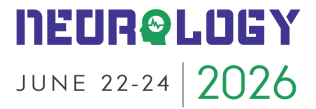Neurotechnologies
Neurotechnologies encompass a diverse array of tools and techniques designed to interface with the nervous system for diagnostic, therapeutic, or research purposes. These technologies leverage advances in engineering, computer science, and neuroscience to manipulate or monitor neural activity at various levels of resolution, from individual neurons to entire brain networks. Examples of neurotechnologies include electroencephalography (EEG), functional magnetic resonance imaging (fMRI), deep brain stimulation (DBS), transcranial magnetic stimulation (TMS), optogenetics, and neural prosthetics. EEG and fMRI allow researchers to non-invasively measure brain activity and study neural correlates of behavior and cognition. DBS and TMS are therapeutic modalities used to modulate brain function in conditions like Parkinson's disease, depression, and chronic pain. Optogenetics involves genetically modifying neurons to respond to light, enabling precise control over neural activity with high spatial and temporal resolution. Neural prosthetics interface directly with the nervous system to restore lost sensory or motor functions, offering hope to individuals with spinal cord injuries or limb amputations. As neurotechnologies continue to evolve, they hold immense promise for advancing our understanding of the brain and developing innovative treatments for neurological disorders, ultimately improving the lives of millions worldwide.

Ken Ware
NeuroPhysics Therapy Institute, Australia
Robert B Slocum
University of Kentucky HealthCare, United States
Yong Xiao Wang
Albany Medical College, United States
W S El Masri
Keele University, United Kingdom
Jaqueline Tuppen
COGS Club, United Kingdom
Milton Cesar Rodrigues Medeiros
Hospital Santa Casa de Arapongas, Brazil




Title : Perception and individuality in patient cases identifying the ongoing evolution of Myalgic Encephalomyelitis/Chronic Fatigue Syndrome (ME/CFS)
Ken Ware, NeuroPhysics Therapy Institute, Australia
Title : Narrative medicine: A communication therapy for the communication disorder of Functional Seizures (FS) [also known as Psychogenic Non-Epileptic Seizures (PNES)]
Robert B Slocum, University of Kentucky HealthCare, United States
Title : Personalized and Precision Medicine (PPM), as a unique healthcare model through biodesign-driven biotech and biopharma, translational applications, and neurology-related biomarketing to secure human healthcare and biosafety
Sergey Victorovich Suchkov, N.D. Zelinskii Institute for Organic Chemistry of the Russian Academy of Sciences, Russian Federation
Title : Neuro sensorium
Luiz Moutinho, University of Suffolk, United Kingdom
Title : Traumatic Spinal Cord Injuries (tSCI) - Are the radiologically based “advances” in the management of the injured spine evidence-based?
W S El Masri, Keele University, United Kingdom
Title : Scalp acupuncture with functional electrical stimulation for the treatment children with autism spectrum disorder
Zhenhuan Liu, Guangzhou University of Chinese Medicine, China